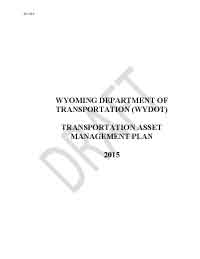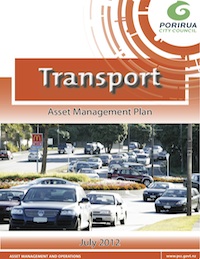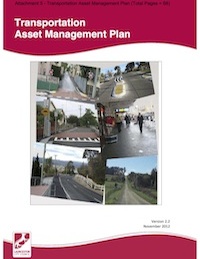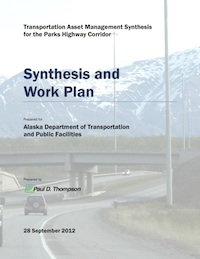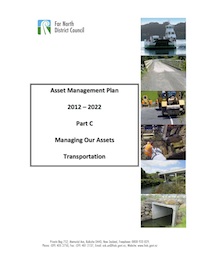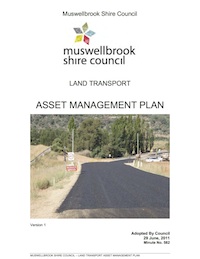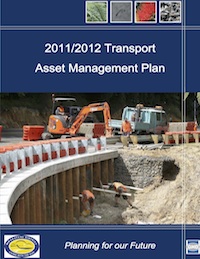Asset Scope Highway Assets
The Wyoming DOT – TAMP [DRAFT] is available here.
This document meets the following additional criteria:
• Includes analysis of future demand impacts on asset needs
• Key revenue projection assumptions identified
• Presents a corridor view of asset management.
The modal scope of this document is: Highway Only.
The asset scope of this document is: Highway Assets, Pavement and bridge only.
External link:
The Porirua City Council – Transport Asset Management Plan is available here.
This document meets the following additional criteria:
• Asset valuation included
• Defines linkages to other planning & programming documents
• Includes an assessment of data quality or reliability
• Includes analysis of future demand impacts on asset needs
• Includes cost projections for meeting performance or LOS targets
• Includes customer-oriented LOS statements
• Includes estimates of future maintenance costs
• Includes estimates of future rehabilitation, replacement, reconstruction, and/or renewal costs
• Includes formal risk assessment results such as a risk register
• References customer surveys/outreach for establishing LOS statements.
The modal scope of this document is: Highway Only.
The asset scope of this document is: Highway Assets, Includes other highway assets.
External link: http://www.pcc.govt.nz/DownloadFile/Publications/Asset-Management-Plans/PCC-Asset-Management-Plan---Transport
The Launceston City Council – Road Asset Management Plan is available here.
This document meets the following additional criteria:
• Asset valuation included
• Defines linkages to other planning & programming documents
• Future cost/performance projections are based on management system analysis (e.g. HERS, dTIMS)
• Includes an assessment of data quality or reliability
• Includes analysis of future demand impacts on asset needs
• Includes cost projections for meeting performance or LOS targets
• Includes estimates of future maintenance costs
• Includes estimates of future rehabilitation, replacement, reconstruction, and/or renewal costs
• Includes formal risk assessment results such as a risk register
• Includes substantive list of process, data, and/or systems improvement actions
• Key revenue projection assumptions identified
• Performance/LOS targets are linked to agency goals/objectives.
The modal scope of this document is: Highway Only.
The asset scope of this document is: Highway Assets, Includes other highway assets.
External link:
